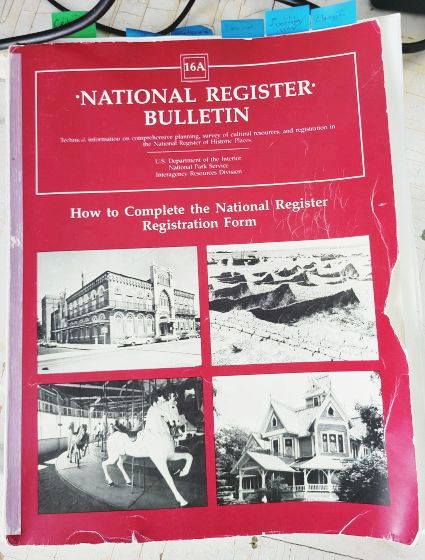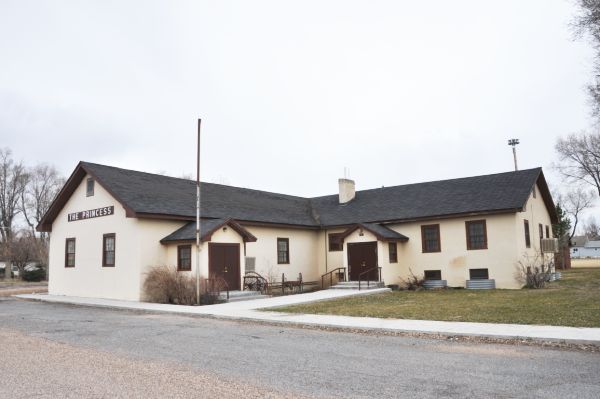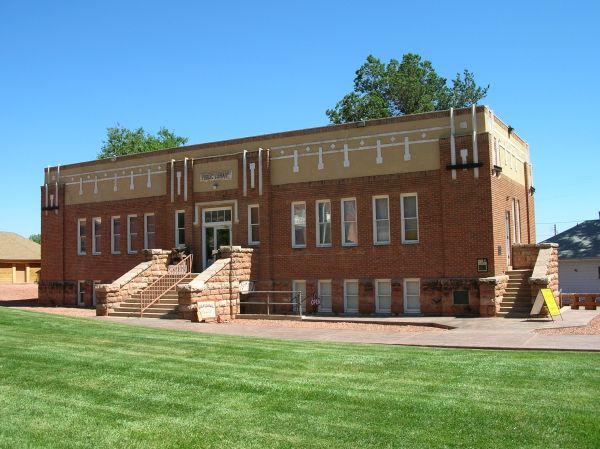On nearly a daily basis I receive inquiries from folks asking if their property qualifies for nomination to the National Register of Historic Places (NRHP). For these inquiries I have a set of basic questions I immediately ask: Why do you want to list your property? Has the building had many alterations? Do you already have some history on it you could share? Their answers will help me know if their property meets the basic eligibility criteria, if it has historical or architectural significance, and if they’re up for the nomination process.
As I’ve noted in a previous blog post, a property needs to meet a few basic criteria to be considered eligible for the NRHP: 1) it must be at least 50 years old (in most cases); 2) it must retain historical integrity; and 3) it must have historical or architectural significance. In this blog post we’ll look at each of these areas in a little more detail.
Age: Why Fifty Years?

This “rule” is often misunderstood and has been questioned by preservationists over the years. Why have an arbitrary set time for a property to be deemed old enough to qualify for nomination? The 50 year guideline was established to allow enough time for a property’s significance to prove itself and to prevent controversial decisions regarding historical significance.
Criteria Consideration G is a rule that applies if the property achieved significance more recently, within the past 50 years and is of exceptional importance. The “exceptional importance” can apply at the local, statewide or national levels. However, the importance will need to be supported by a robust context to prove that the significance isn’t fleeting but will stand the test of time.
Historic Integrity
I recall a comment made at a National Register review meeting several years ago, something like, “Have all the good buildings been nominated already?” This was regarding a rather plain-looking building being nominated. I had to remind them that the National Register is not a beauty pageant. If the building is significant and retains historical integrity, it can be listed. So, does a building need to look exactly as it did when it was first built to be eligible for the National Register? Well, that all depends and we’ll discuss this below.
Historical integrity, as it applies to National Register eligibility, means that the property should retain an authentic historic identity, especially regarding the property’s period of significance (not necessarily how it looked when first constructed). We know that buildings change over time with trends and upgrades in materials, technology and function. However, it is important that the property being nominated evokes its appearance during the established period of significance. This applies to materials, design features and construction features relating to the period of significance. If the building has been substantially changed, then it really isn’t representing that significant period.

There are seven aspects that are evaluated when assessing the integrity of a potential National Register property: location, design, setting, materials, workmanship, feeling and association. I won’t go into the details of each here. However, I will note that not all seven qualities are required to be met for a property to be eligible for the National Register. As NRHP Bulletin 16A notes, a property may be eligible despite some impacts on historic integrity “…as long as the overall sense of past time and place is evident.”
Properties nominated for their architectural significance must meet the highest integrity standards because they are a representative example. However, those properties nominated for association with a historical event or important person may have a little more leniency. Each property is evaluated on its own merits and determined based on these seven qualities and whether it still represents its proposed period of significance.
Repairs and modern renovations to historic homes can have a significant impage on their historic integritiy. Before making changes to a historic structure be sure to research the most appropraite means and materials for the work you have in mind. Click on the link below for a blog compiled by our friends at RedFin Real Estate and remember that the State Preservation Office is always willing to answer any questions that may come up.
25 Must-Read Historical Home Renovation Tips | Redfin (Parent company of ApartmentGuide and Rent.)
Significance
More than just a chronological history, a National Register nomination focuses on why the property is significant. Determining and making a good argument for significance is perhaps the most difficult aspect of preparing a good nomination. There are a variety of aspects to consider and providing a good and thorough historical context is the best way to evaluate and determine significance.
Most nominated resources are significant at the Local level, meaning the community (typically the city or county). If the resource has a broader historical or architectural importance than just the local region, it may be significant at the Statewide level. And if the nominated property has a broader significance that just within the state it could be nominated at the National level. That does not mean that it is the most significant in the entire country—just on a broader level than statewide. Very few properties are nominated at the national level and most of them are typically nominated as National Historic Landmarks—but not all!
The National Register has set up four Criteria under which a property can be nominated. It can be significant under only one or under multiple criteria. As state in the National Register Bulletin 16A for National Register Criteria:
Criteria: The quality of significance in American history, architecture, archeology, engineering, and culture is present in districts, sites, buildings, structures, and objects that possess integrity of location, design, setting, materials, workmanship, feeling, and association, and:
- A. That are associated with events that have made a significant contribution to the broad patterns of our history; or
- B. That are associated with the lives of persons significant in our past; or
- C. That embody the distinctive characteristics of a type, period, or method of construction or that represent the work of a master, or that possess high artistic values, or that represent a significant and distinguishable entity whose components may lack individual distinction; or
- D. That have yielded, or may be likely to yield, information important in prehistory or history.
The most common assumption is that most National Register properties are significant for association with an important person or a building’s architectural style. Actually, the majority of nominations in Utah are significant under Criterion A for the property’s association with a historical event or pattern of history. This is followed by Criterion C for architectural significance and finally under Criterion B for association with an important person (which is a distant third). Most of the properties listed under Criterion D are archaeological resources from which more information can be discovered through survey and excavation. However, some buildings have been nominated under Criterion D for their potential to provide more information in construction techniques. And several listed properties in Utah are significant under more than one criterion—the most common being Criteria A and C.

Once the Criteria are determined for the property, there are several different Areas of Significance that can apply. I won’t cover them here, because there are dozens. However, for example, a building such as a library might be significant under Criterion A in the Areas of Education for its association with the impact the library had on local community affairs and public education. However, the building may also be significant under Criterion C in the Area of Architecture if it is a unique or best example of an architectural style in the community or a good example of an important broader architectural trend.
One important aspect to apply when determining the Criteria and Area of Significance is the Period of Significance (POS). As the term implies, this is the period in which the property attained its highest levels of importance. If it is a building significant for its architecture, the POS might be just the year it was constructed. That is, if it has changed very little since then. However, if there were alterations made to it during the historic period and they have achieved significance in their own right, then the POS would be the time between original construction and when the alterations were made. But, just to throw a wrench in the works, say you have a building constructed in the 1950s that was in a non-descript architectural style; however, from 1965-69 the building was renovated using the then trendy New Formalist style and it happened to be a significant example of that style in the city. The POS for this property would be 1965-69.

If the property is being nominated under Criterion A (for association with an event/broad pattern of history) the POS would be for the period for which the property was associated with the historical event pattern of history. And likewise, for properties significant under Criterion B for an important person, the POS would be the period for which the person was most productive. So again, either of these could be any time period during the property’s historic era—not necessarily beginning at the time the building was constructed.
What Next?
I have only provided a brief overview of the basic requirements a property must meet to be eligible for the National Register of Historic Places. Hopefully, I haven’t confused you too much! You can see that there are many determinants involved in evaluating a property’s eligibility and significance. If you are interested in finding out if your property might be eligible for National Register nomination, contact the Utah SHPO and we can answer your questions!